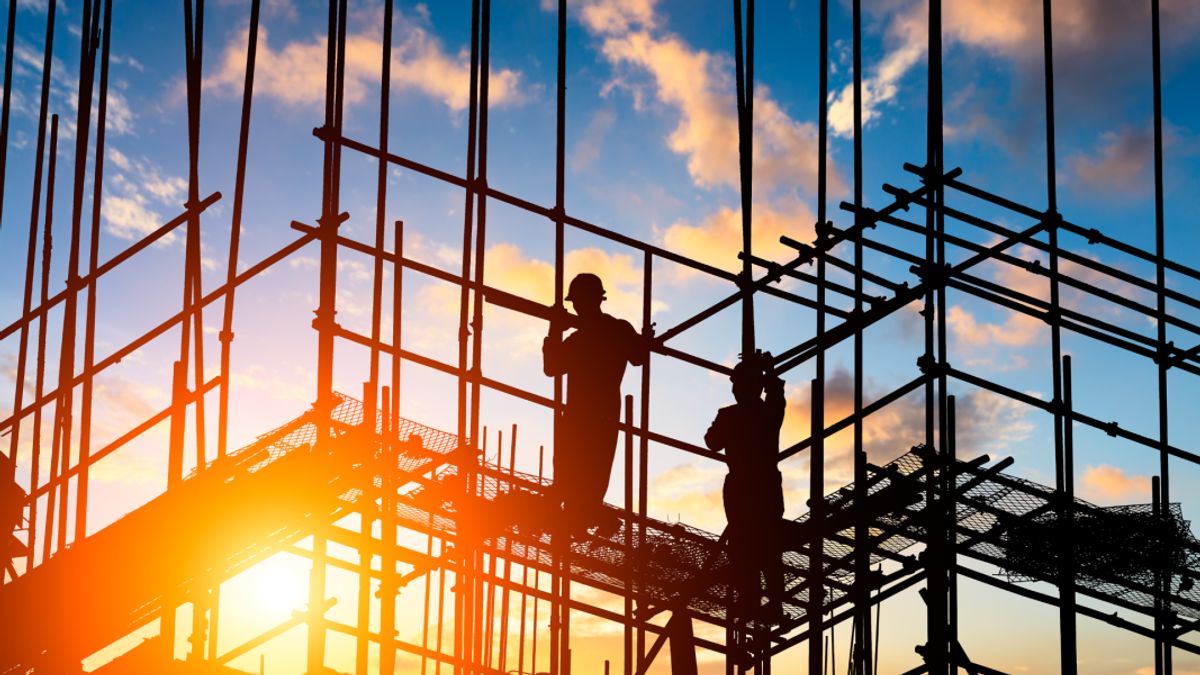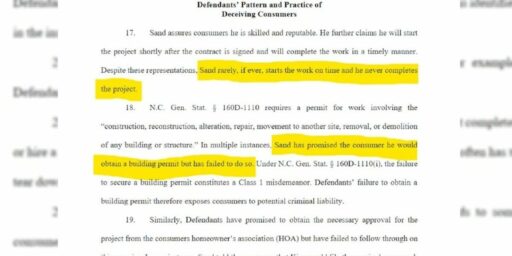The design-build approach to construction projects streamlines the process by combining design and build services under one contractor, offering a range of benefits from improved communication to more efficient project completion. This article explores the advantages of working with a design-build contractor, the role of the project owner, strategies for overcoming challenges, effective communication, and how to leverage the model for project efficiency.
Key Takeaways
- Design-build contractors serve as a single point of contact, facilitating streamlined project management from concept to completion.
- Project owners play a crucial role in the design-build process, with responsibilities that require active engagement and contribution for success.
- Challenges in design-build projects can be navigated through a culture of honesty, feedback, and collaborative problem-solving.
- Clear and concise communication is vital in avoiding miscommunication and ensuring the project aligns with the owner’s vision.
- Choosing the right design-build contractor is essential for integrated teamwork, total accountability, and the achievement of efficient and effective project outcomes.
The Advantages of a Single Point of Contact

Streamlined Process from Concept to Completion
The design-build approach integrates all aspects of a construction project, from initial design through to completion, under a single contract. This unified workflow simplifies the construction process, reducing the complexity typically associated with managing multiple contracts and teams.
Key steps in the design-build process include:
- Initial consultation and project scope definition
- Conceptual design and feasibility studies
- Detailed design and engineering
- Construction and project management
- Final walkthrough and project handover
By following these steps, project owners can expect a more efficient timeline, with fewer delays and a cohesive team working towards the same goal.
The design-build model fosters a harmonious environment where every phase of the project is interconnected, leading to a seamless transition from one stage to the next.
Enhanced Communication and Collaboration
In the design-build approach, fostering collaboration through communication is pivotal. Seamless integration strategies help construction teams streamline processes and deliver projects on time and within budget. By embracing technology, stakeholders can leverage software, devices, and other project management tools for real-time updates, ensuring everyone is informed and engaged.
Effective communication is the cornerstone of any successful design-build project. It minimizes misunderstandings and aligns all parties with the project’s goals.
Clear communication channels between all parties, including contractors, lenders, and subcontractors, are essential. Regular updates and collaborative efforts can promptly address issues, preventing delays or costly misunderstandings. Here are some key practices to enhance communication and collaboration:
- Embrace technology to stay informed.
- Communicate important points in multiple ways.
- Ensure open lines of communication with all stakeholders.
- Organize and share project documents efficiently.
Innovative and Cost-Effective Solutions
Design-build contractors are at the forefront of innovation, often employing advanced technologies and methodologies to deliver cost-effective solutions. The integration of Building Information Modeling (BIM) and energy-efficient practices not only enhances the sustainability of a project but also reduces long-term operational costs.
By optimizing the use of existing structures and layouts, significant savings can be achieved without compromising on quality or design. This approach not only conserves resources but also honors the original architecture, adding value to the project.
In the realm of cost management, design-build contractors leverage their industry networks to secure competitive pricing and materials. Below is a list of strategies that contribute to innovative and cost-effective solutions:
- Utilizing technology and software to streamline operations.
- Networking with industry professionals for collaborations.
- Digitizing procedures for compliance and efficiency.
- Prefabrication construction to minimize waste and time.
- Repurposing existing structures to save on materials and labor.
The Role of the Project Owner in Design-Build

Understanding Your Responsibilities
As a project owner, being aware of your roles and responsibilities is crucial to the success of a design-build project. One of the key responsibilities is to provide detailed input on engineering and design specifications, which includes decisions about the equipment to be used and other critical project elements.
It’s essential to understand your contractual obligations to prevent disputes and ensure the project progresses smoothly. Addressing issues promptly and maintaining open lines of communication with your contractor are fundamental to this process.
Additionally, managing your own finances, including taxes, expenses, and income, is a significant aspect of your role. Proper pricing of services, considering all financial aspects and market value, is also part of your responsibility. Staying informed about legal requirements and ensuring compliance will bolster your business’s credibility and value.
The Importance of Being Present and Engaged
In the realm of design-build projects, the presence and engagement of the project owner are pivotal. Being present on-site and involved in the process ensures that you can swiftly address any concerns and contribute to the project’s success. It’s not about micromanaging but about being a proactive part of the team.
Your active participation is a signal to the team that their work is valued and that you are committed to the project’s success. It fosters a collaborative environment where everyone is motivated to put their best foot forward.
Here are some ways to be effectively present and engaged:
- Make yourself available for meetings and discussions.
- Visit the construction site regularly to monitor progress.
- Communicate clearly and on multiple platforms when necessary.
- Understand the chain of communication to know whom to approach with different issues.
Remember, your involvement is not seen as a nuisance but as an essential contribution to the dance of project success. Being honest about your expectations and maintaining open lines of communication are key to a harmonious and productive partnership.
Contributing to a Smooth and Efficient Process
To contribute to a smooth and efficient process, project owners should be proactive in understanding the roles of construction contractors and the use of digital solutions. Implementing innovative technologies and effective risk management strategies are crucial for successful project outcomes. For instance, construction management software like PlanRadar can significantly enhance sustainability and productivity.
Effective loan disbursement strategies are also key to maintaining a smooth construction process. A clear disbursement schedule aligned with project milestones ensures timely fund allocation. Here’s a simple list to guide project owners:
- Establish a detailed disbursement schedule
- Align fund releases with construction milestones
- Monitor disbursement against project progress
By staying engaged and informed, project owners can facilitate a construction process that is not only smooth but also cost-effective and timely, leading to overall client satisfaction.
Overcoming Challenges in Design-Build Projects

Navigating Unique Obstacles
Every design-build project comes with its own set of unique challenges that require tailored solutions. Conducting risk assessments and developing detailed plans are critical steps in anticipating and overcoming these hurdles. Employing innovative design solutions is essential for integrating features that address specific project needs, such as accessibility.
- Identify potential risks early on
- Develop contingency plans
- Utilize creative design to solve unique problems
By proactively addressing these unique obstacles, teams can ensure that the project progresses smoothly without significant delays or cost overruns. It’s about foreseeing potential issues and having a strategy in place to manage them effectively.
Fostering a Culture of Honesty and Feedback
In the realm of design-build projects, fostering a culture of honesty and feedback is paramount. This culture encourages open discussions and the sharing of insights, which are crucial for the project’s success. To achieve this, start by setting clear expectations for communication and ensure that all team members feel comfortable voicing their opinions.
By inviting feedback and demonstrating a willingness to act on it, you create an environment where continuous improvement is the norm, not the exception.
It’s also essential to establish a chain of communication that clarifies who is responsible for what. This clarity helps in maintaining accountability and ensures that feedback is directed to the right channels. Remember, being brief and to the point can prevent misunderstandings and keep the project moving forward efficiently.
Here are some steps to cultivate this culture:
- Start off on the right foot with clear and concise communication.
- Build mutual trust through consistent honesty.
- Invite feedback from all parties and follow up when necessary.
- Ensure open discussions on design and layout changes to adapt and refine plans proactively.
Efficient Problem Solving Through Teamwork
In the realm of design-build projects, efficient problem solving is often the linchpin of success. The contractor’s project management plays a pivotal role in this aspect, involving meticulous coordination, diligent follow-up, and robust relationship-building to ensure successful outcomes and client satisfaction. Key activities such as planning, communication, and quality control are not just tasks but the foundation of a thriving project.
Embracing a culture of teamwork allows for a dynamic problem-solving environment where each member’s expertise is leveraged. This collaborative approach ensures that issues are addressed promptly and effectively, minimizing the risk of project delays.
Open discussions on design and layout changes are crucial. By encouraging a proactive dialogue between builders and architects, necessary adjustments are identified early, streamlining the construction process. Moreover, being receptive to feedback from team members can lead to significant improvements in task execution, enhancing overall efficiency and reducing costs.
To facilitate this, consider the following steps:
- Establish clear channels of communication among all stakeholders.
- Schedule regular meetings to discuss progress and potential issues.
- Implement a system for tracking and managing changes.
- Encourage team members to voice their concerns and suggestions.
Effective Communication Strategies for Design-Build Success

Ensuring Clarity and Conciseness in Discussions
In the design-build process, clear and concise communication is paramount to project success. It’s essential to articulate your vision and requirements with precision to avoid misunderstandings that can lead to costly changes later on.
- Pay close attention to verbal and non-verbal cues during discussions.
- Ask questions to clarify and show genuine interest in the speaker’s perspective.
- Be brief but clear, avoiding slang and jargon that might confuse stakeholders.
When it’s important, communicate it clearly in several ways. This multi-faceted approach ensures that critical information is understood by all parties involved.
Understanding the chain of communication within your project is also crucial. Knowing who reports to whom and who is responsible for disseminating information can prevent information silos and ensure that everyone is working towards the same goals.
Avoiding Miscommunication and Expensive Change Orders
Miscommunication in design-build projects can lead to expensive change orders and project delays. To avoid these costly setbacks, clear and consistent communication channels must be established from the outset. Here are some strategies to ensure everyone is aligned:
- Define communication protocols early in the project. Determine how information will be shared and who is responsible for disseminating updates.
- Utilize project management software to track changes, document decisions, and maintain a clear record of communications.
- Schedule regular project meetings to discuss progress, address concerns, and confirm that all parties understand their roles and responsibilities.
By proactively addressing potential communication issues, you can prevent misunderstandings that might otherwise escalate into costly rework or project delays.
Remember, when changes are necessary, they should be communicated promptly to the relevant parties to assess feasibility and make the required adjustments. This approach minimizes the risk of inaccurate documentation and ensures that everyone’s expectations are managed effectively.
Creating a Positive Outcome for Your Vision
Achieving the vision for your project requires a blend of honesty, clarity, and flexibility. Begin by being upfront about your desires; don’t hesitate to share your complete wishlist with your design team. This openness will help in crafting a design that truly resonates with you, potentially reducing the need for multiple revisions.
However, it’s equally important to maintain a degree of flexibility. Understand that while your design-build team strives to meet your expectations, not every wish can be accommodated within the constraints of budget and practicality. Being willing to compromise can lead to innovative solutions that still capture the essence of your vision.
Clear and consistent communication is the cornerstone of any successful design-build project. It ensures that all parties are aligned, which is crucial for the project to progress smoothly and for your vision to be realized effectively.
Remember to have a clear set of requirements and expectations from the outset. The more detailed your initial concept, the easier it is for the team to provide accurate and inspired feedback, thus streamlining the design process. Open discussions on design and layout changes are vital, as they allow for early identification and resolution of potential issues, fostering a smoother construction phase.
Leveraging the Design-Build Model for Project Efficiency

The Benefits of Integrated Design and Construction Teams
The integration of design and construction teams under the design-build model brings a multitude of efficiencies and synergies to a project. The seamless collaboration between designers and builders ensures that ideas flow freely, potential issues are identified early, and solutions are implemented swiftly, leading to a streamlined project timeline.
- Enhanced communication between team members
- Stronger collaboration, fostering innovative solutions
- Quicker project completion and potential cost savings
This approach not only simplifies the management of the project but also aligns the objectives of all parties involved. The design-build contractor becomes the single source of accountability, which can significantly reduce the risk of errors and miscommunication. By having a unified team, project owners can expect a more cohesive and coherent execution of their vision.
The Design-Build model in Dubuque promotes collaboration, transparency, and personal connections, leading to superior construction outcomes and community involvement.
Choosing the right design-build contractor is crucial, as it ensures that the team working on your project is well-coordinated and fully invested in delivering the best possible outcome. The benefits of this model are clear, and when executed correctly, it can transform the construction experience.
Total Accountability for Better Project Outcomes
In the design-build model, the contractor’s role extends beyond mere construction; they are responsible for the entirety of the project. This total accountability ensures that the contractor is not only committed to the quality of work but also to adhering to the project’s budget and timeline. The single-source responsibility model inherent in design-build projects translates to a more cohesive and unified approach to project execution.
- Time Savings: Contractors leverage their expertise to complete projects promptly.
- Quality Assurance: The design-build firm’s accountability encompasses the design quality and the final aesthetics of the project.
- Cost Management: A focus on keeping the project within financial constraints is a hallmark of the design-build approach.
By fostering a culture of accountability, design-build contractors can mitigate risks and streamline the process, leading to better project outcomes. Regular progress reviews and open feedback mechanisms are essential to maintaining this accountability and ensuring that all team members are aligned with the project’s goals.
Choosing the Right Design-Build Contractor for Your Needs
Selecting the appropriate design-build contractor is pivotal for the success of your project. Ensure that the contractor’s vision aligns with yours and that they have a proven track record of delivering quality work within budget and on time. It’s essential to ask the right questions to gauge their experience and expertise.
- What is their experience with projects similar to yours?
- Can they provide references from past clients?
- How do they manage project communication and collaboration?
- What is their approach to handling changes or challenges during the project?
The importance of geotechnical assessments cannot be overstated in concrete construction projects. These assessments inform the design and construction phases, reducing the risk of future complications.
Finally, verify the legitimacy of the contractor by requesting to see their licenses, insurance, and bonding information. Compatibility with your project vision and a comprehensive understanding of your needs will ensure a smooth and efficient process from conception to completion.
Conclusion: The Strategic Advantage of Design-Build Contracting
In summary, the design-build approach to construction projects offers a strategic advantage by streamlining the process, fostering collaboration, and enhancing communication. By having a single point of contact and a unified team, project owners can expect a more efficient journey from concept to completion, with fewer setbacks and change orders. The partnership between the client and the design-build contractor is pivotal, requiring active client involvement for optimal results. Despite potential challenges, the benefits of reduced errors, innovative solutions, and overall cost-effectiveness make the design-build model a compelling choice for project success. As we’ve explored throughout this article, choosing a design-build contractor is not just about hiring a team; it’s about embracing a philosophy that values transparency, teamwork, and a shared vision for achieving outstanding outcomes in commercial construction.
Frequently Asked Questions
What are the main benefits of working with a design-build contractor?
The main benefits include a streamlined process from concept to completion, enhanced communication and collaboration between teams, and the delivery of innovative and cost-effective solutions.
How does the design-build model improve communication?
The design-build model ensures all parties are on the same page by having a single point of contact and fostering a culture of honesty and feedback, which minimizes misunderstandings and costly changes.
What is the role of the project owner in a design-build project?
The project owner is expected to understand their responsibilities, be present and engaged throughout the process, and contribute to a smooth and efficient project flow.
What are some common challenges in design-build projects?
Design-build projects may face unique obstacles such as managing multiple stakeholders, ensuring timely decision-making, and maintaining clear communication among all parties involved.
How can project efficiency be leveraged using the design-build model?
Project efficiency can be enhanced through the integration of design and construction teams, total accountability from the design-build contractor, and selecting the right contractor for your needs.
What strategies can ensure success in design-build projects?
Success strategies include ensuring clarity and conciseness in discussions, avoiding miscommunication, inviting feedback, and creating a positive outcome aligned with the project owner’s vision.





